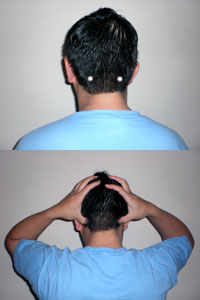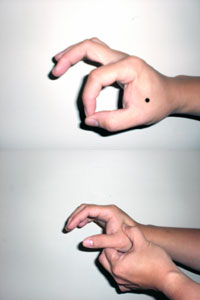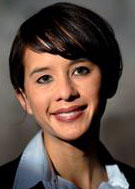Headaches
are a common condition which are experienced by many and may be
treated by physical therapists in the physical therapy clinic. The
National Headache Foundation estimates that more than 45 million
Americans suffer from headaches
(1). Conducting a detailed evaluation along with obtaining a
thorough history can not only assist with establishing an accurate
diagnosis but aid in determining a proper plan of care for the
patient as well
(2).
The International Classification of Headache Disorders classifies
“primary headaches into four categories: 1.0, migraine; 2.0,
tension-type headache; 3.0, cluster headache and other trigeminal
autonomic cephalalgias; and 4.0, other primary headaches. There are
nine categories of secondary headache, which are headache attributed
to 5.0, head and neck trauma; 6.0, cranial or cervical vascular
disorders; 7.0, nonvascular intracranial disorders; 8.0, substance
or its withdrawn; 9.0, infection; 10.0, disorder of homeostasis;
11.0, disorders of cranium, neck, eyes, ears, nose, sinuses, teeth,
mouth, or other facial or cranial structures; 12.0, psychiatric
disorders; and 13, cranial neuralgias and central causes of facial
pain. Finally, there is a fourteenth category that includes headache
not classifiable elsewhere
(3)”.
In the physical therapy clinic patients seen with headaches usually
present with migraine or tension-type headaches. Physical therapists
can employ a range of treatment options varying from postural
training, functional training, modalities,
stretching and various manual therapy techniques to assist with
treating these patients with headaches. One form of an alterative
treatment option which we have found useful for treating headaches
in the clinic is acupressure. This treatment option is somewhat
similar to another technique called trigger point release which is
already utilized by many therapists in the clinics for treatment of
headaches and other conditions.
Acupressure is a traditional Chinese medicine technique derived from
acupuncture which utilizes fingers to press key points on the
surface of the skin that are especially sensitive to bioelectrical
impulses in the body (4). It is believed that when these points are
pressed, endorphins are released which have the ability to block
pain and promote the flow of blood and oxygen to an affected area
(4). This in turn will also cause the muscles to relax and stimulate
the body’s self-curative abilities (5).
Two preliminary studies (6,7) reported benefits from using finger
pressure on specific acupuncture points (acupressure) to relieve
tension-type headache pain in some patients. However, no controlled
research on this approach has been done
(8).
In a study which supported acupressure but not necessarily its use
for treating headaches, Kober et al. found that acupressure is an
effective and simple-to-learn treatment of pain in emergency trauma
care and leads to an improvement of the quality of care in emergency
transport
(9).
In light of the positive results which we have obtained in the
clinic, one can see that a review of the published research which is
available for acupressure for the treatment of headaches is
exceptionally encouraging but to some extent still limited. As we
wait for better quality research to be conducted and published, we
hope that practitioners continue to be open-minded and believe that
the provision of this alternative treatment option should not be
withdrawn.
|
Below are two common acupressure points utilized for the treatment
of headaches from The Acupressure Atlas (5).
|
 |
| |
|
|
Gall Bladder 20 (GB20) -
Wind Pool
|
| |
|
|
How to locate the point: Wind
Pool is located at the back of the head, on
both sides of the middle axis next to the
muscles that can be felt.
|
| |
|
|
|
| |
|
|
How to apply pressure to the point:
Place both thumbs on the points to the left
and right of the middle axis of the head.
Massage the points using first steady
pressure and then circling pressure, in
clockwise and then counterclockwise
movements, for one to two minutes each. |
|
| |
|
 |
| |
|
|
Large
Intestine 4 (LI4) -
Valley of Union |
| |
|
|
How to locate the point: Make
an O with your thumb and index finger so
that a small bulge of muscle rises just
above the web of skin between the index
finger and thumb on the back of the hand.
This bulge marks the site of Large Intestine
4.
|
| |
|
|
|
| |
|
|
How to apply pressure to the point:
Take one hand in a tweezers grip between
your thumb and index finger, with your thumb
resting on Large Intestine 4 and the tip of
the index finger on the other side of the
hand as a balancing point, apply steady
pressure and then circling pressure for one
to two minutes each.
Please
note that acupressure to Large Intestine 4
should not be utilized during pregnancy as
this can stimulate uterine contractions
(4,5).
|
|
Last revised: August 13, 2009
by Denise Chang, MD & Chai Rasavong, MPT, MBA
References
1. www.headaches.org
2.
Gallagher R.M. Headache Pain. The Journal of the American Osteopathic
Association. 2005;105(4):7-11
3.
www.textbookofpain.com
4. Gach M (1990). Acupressure's Potent points: A Guide to Self-Care for
Common Ailments. New York, NY: Bantam Books.
5. Kolster BC, Waskowiak A (2007). The Acupressure Atlas. Rochester, VT:
Healing Arts Press.
6. Vernon HT. Manipulative therapy in the chiropractic treatment of
headaches: a retrospective and prospective study. J Manipulative Physiol
Ther 1982;5:109-12.
7. Mootz RD, Dhami MSI, Hess JA, et al. Chiropractic treatment of chronic
episodic tension-type headache in male subjects: a case series analysis. J
Can Chiro Assoc 1994;38:152-9.
8.
www.ultimatewatermassage.com
9. Kober A
et al. Prehospital Analgesia with Acupressure in Victims of Minor
Trauma: A Prospective, Randomized, Double-Blinded Trial. Anesthesia &
Analgesia. 2002;95(3):723-727.27.








